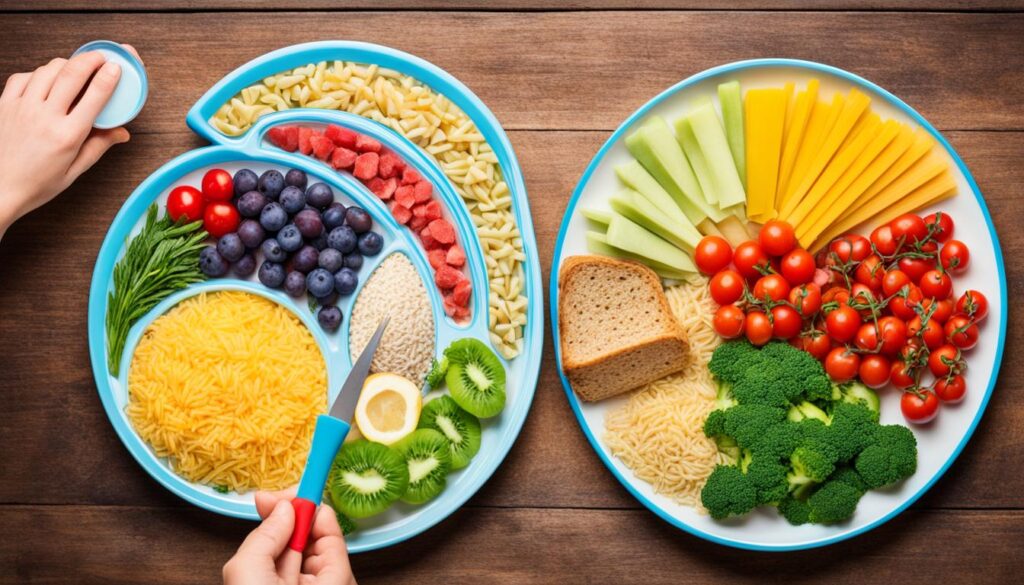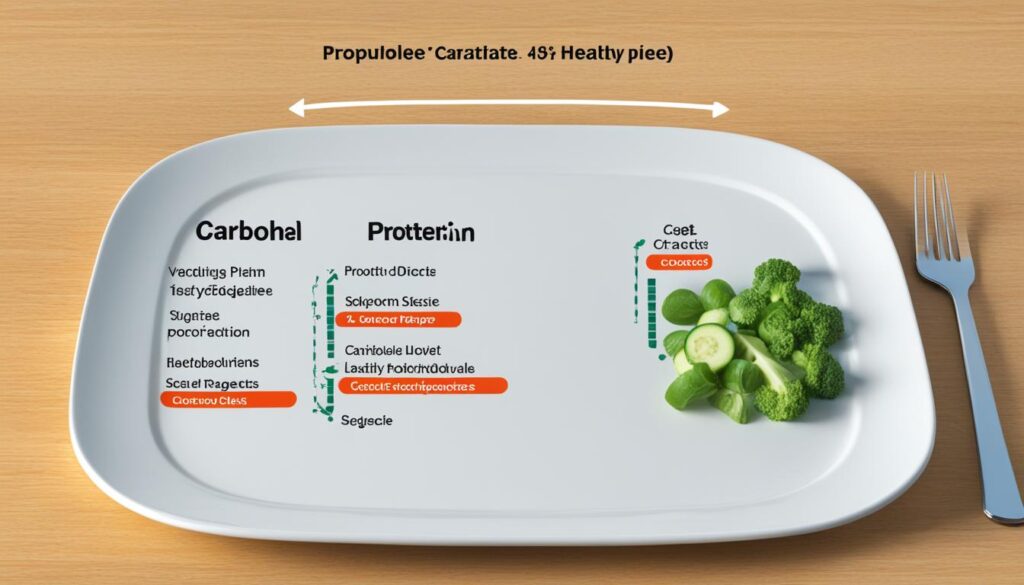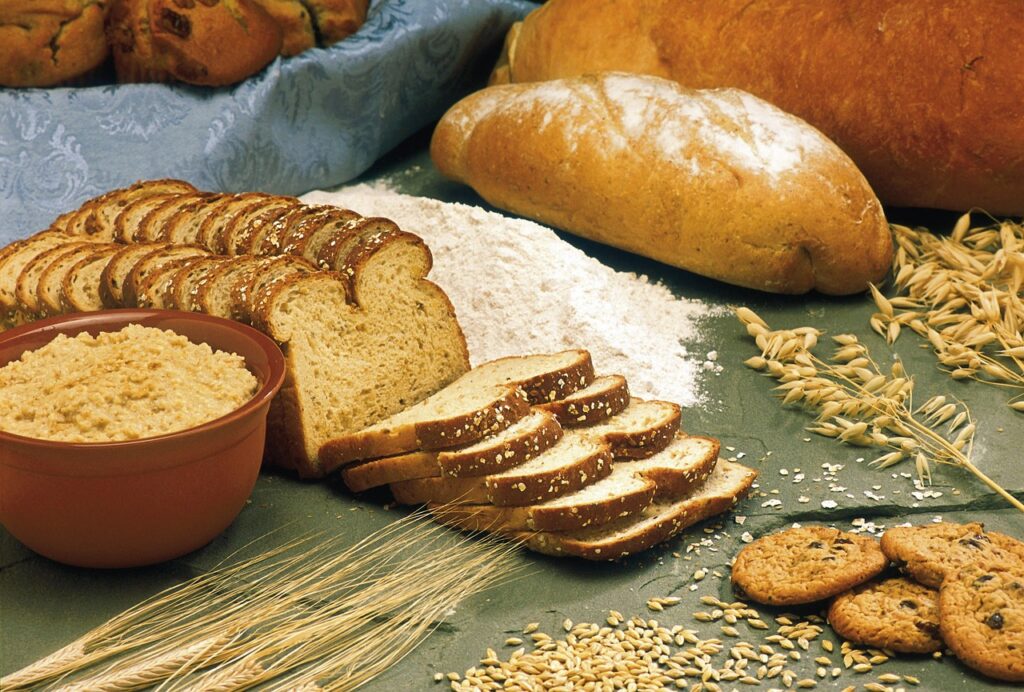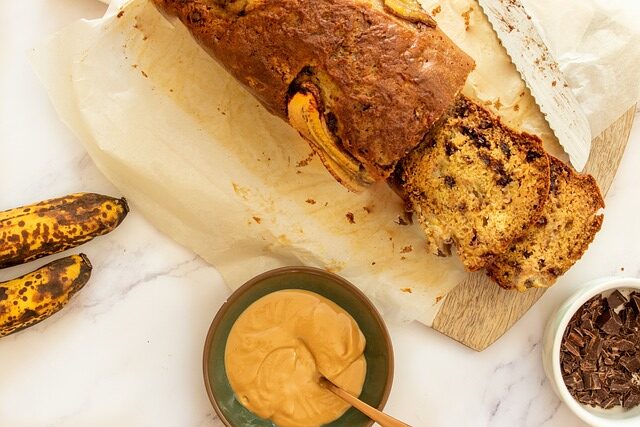Effective Blood Sugar Support: Natural Solutions
Effective Blood Sugar Support: Natural Solutions
Managing blood sugar is key for those with diabetes and other metabolic issues. It’s vital for avoiding complications and keeping healthy. Luckily, there are many natural ways to help control sugar levels.
Herbal supplements like Milk thistle, Purslane, Ginseng, Nettle, Bitter melon, Fenugreek, Gymnema, Pycnogenol, and Prickly pear can help manage blood sugars.
Cinnamon’s effects are mixed. A 2012 review found no big impact on HbA1c, but a 2019 review showed it could lower fasting blood sugar. Nigella Sativa has been studied a lot and seems to help lower fasting blood sugar and improve blood sugar balance and cholesterol levels.
Adding magnesium can help with fasting blood glucose and improve cholesterol levels in people with diabetes. Alpha-lipoic acid (ALA) can also help by lowering blood sugar after meals, improving blood sugar balance, and reducing inflammation.
Vitamin D might lower the risk of type 2 diabetes and help reduce A1c levels. Zinc can support insulin function in people with type 2 diabetes. Folate helps keep blood sugar stable and can lower A1c and fasting glucose levels. Omega-3 fatty acids can improve triglyceride levels but don’t affect blood sugar or insulin levels much in people with diabetes.
Managing blood sugar well involves several strategies. Let’s look at some effective ways to support blood sugar naturally:
Key Takeaways:
- Regular exercise helps regulate blood sugar and makes insulin work better.
- Counting carbs helps control blood sugar levels.
- Eating more fiber, especially soluble fiber, can improve blood sugar management.
- Drinking water with meals can slow down the rise of blood sugar levels.
- Controlling portion sizes helps avoid eating too much sugar.
By using these natural methods and making lifestyle changes, people can better manage their blood sugar. Always talk to a healthcare professional before changing your diabetes plan.
Exercising Regularly
Regular exercise is key for managing blood sugar and staying healthy. It boosts insulin sensitivity, lowers A1C levels, and cuts down on health risks. Whether it’s walking, running, or swimming, staying active helps keep blood sugar in check.
Physical activity can lower blood glucose for up to 24 hours after a workout. This makes the body more sensitive to insulin, which is great for people with diabetes. Adding exercise to your daily routine can greatly improve blood sugar control.
But, be careful when exercising, especially if you’re on insulin or diabetes meds. You could get hypoglycemia if you don’t adjust your meds or eat enough carbs. The 15-15 rule can help manage this. It means eating 15-20 grams of carbs if your blood sugar is low, and eating more every 15 minutes until it gets back to normal.
Some things increase the risk of getting hypoglycemia when you exercise. These include taking insulin, skipping meals, and doing intense or long workouts. Always talk to your doctor for advice on how to avoid this. They might suggest changing your meds or eating a snack before you work out.
Some exercises, like heavy lifting or sprinting, can raise your blood sugar. This is because of stress hormones or the dawn phenomenon, a natural rise in blood sugar in the morning. To avoid this, try doing moderate workouts, relax, and adjust your insulin or carbs before and during exercise.
Checking your blood sugar and keeping a workout log can help you understand how exercise affects you. This way, you can adjust your routine and manage your blood sugar better.
The American Diabetes Association says adults should do at least 150 minutes of aerobic activity weekly. Kids and teens with diabetes should aim for 60 minutes of moderate to vigorous activity every day. Adding strength training 2 to 3 times a week can also improve fitness and insulin sensitivity.
Before you start exercising, check your blood sugar to make sure it’s safe. Here are some guidelines:
1. Lower than 90 mg/dL (5.0 mmol/L): Have a small snack before exercising.
2. 90-124 mg/dL (5-6.9 mmol/L): Eat 10 grams of glucose before exercise.
3. 126-180 mg/dL (7-10 mmol/L): Safe for exercising, but be aware of potential blood sugar increases.
4. 182-270 mg/dL (10.2-15 mmol/L): Also safe for exercising, but watch for blood sugar spikes.
5. Above 270 mg/dL (15 mmol/L): Not safe for exercising due to high blood sugar.
It’s important to check your blood sugar during and after exercise to prevent low or high levels. If your blood sugar drops too low, stop exercising and eat something with fast-acting carbs. Having snacks with slow-acting carbs after exercise can also help prevent blood sugar drops.
For those on insulin or other blood sugar medications, check your blood sugar every 30 minutes while exercising. This helps keep your levels stable and lets you adjust your meds or carbs as needed.
So, get those sneakers on and make exercise a regular part of your life. Your body and blood sugar will thank you!
Managing Carbohydrate Intake
Managing carbs is key for stable blood sugar in people with diabetes. Counting carbs helps plan meals for better health. Knowing the types of carbs and their effect on blood sugar is also crucial.
Food has three main carbs: starches, sugar, and fiber. “Total carbohydrate” on labels means all three in one number.
Non-starchy veggies like lettuce and broccoli are great. They’re high in fiber and low in carbs, so they don’t raise blood sugar much.
Starchy foods include fruits like apples and whole grains like brown rice. These should be eaten in moderation because of their carbs.
Refined carbs and those with added sugars should be eaten less or not at all. This includes sugary drinks and processed snacks.
Choosing whole grains and unprocessed carbs helps with better nutrition and blood sugar control.
Carbs are measured in grams. For diabetes, 1 carb serving is about 15 grams.
| Meal | Total Carbohydrates | Carb Servings |
| Breakfast | 65 grams | 4 carb servings |
| Lunch | 59 grams | 4 carb servings |
| Dinner | 57 grams | 4 carb servings |
| Snack | 19 grams | 1 carb serving |
This menu has 200 grams of carbs, or about 13 servings. Carb needs vary by age, weight, and activity level. A healthcare provider can help figure out the right amount for you.

In the next section, we will delve into the importance of increasing fiber intake for blood sugar control and overall health.
Increasing Fiber Intake
Increasing fiber intake is key to managing blood sugar levels and boosting overall health. Many people don’t get enough fiber each day. This is a big issue for blood sugar control.
Most adults in the U.S. only get half the fiber they need. The Dietary Guidelines for Americans suggest adults aim for 22 to 34 grams of fiber daily. Adding fiber-rich foods to your meals can help meet these goals and support blood sugar balance.
Fiber comes in two types: soluble and insoluble. Soluble fiber, found in foods like apples and bananas, helps lower blood cholesterol and glucose. Insoluble fiber, in whole wheat and nuts, aids digestion and increases stool bulk.
Eating more fiber has many health perks, like lowering the risk of colorectal cancer and heart disease. It also cuts the risk of all cancers. Fiber from cereals is especially good for your heart and overall health.
| Institute of Medicine Fiber Recommendations | Men | Women |
|---|---|---|
| Under 50 years | 38 grams | 25 grams |
| Over 51 years | 30 grams | 21 grams |
Great fiber sources include whole grains, fruits, and vegetables. Fiber supplements are available but lack the nutrients found in whole foods. Some fibers might cause gas in some people.
Start adding fiber slowly to avoid discomfort. Drink lots of water with it to help it work better. High-fiber foods make you feel fuller, which can help with weight control.
Only 5% of Americans hit the daily fiber goal. In the UK, the average fiber intake is about 20 grams a day, below the recommended 30 grams.
Soluble fiber is key for managing blood sugar after meals. People react differently to the same meal, affecting their blood sugar levels. Insoluble fiber is important for digestion but doesn’t affect blood sugar much.
Viscous fibers like those in oats and citrus fruits help lower blood sugar by slowing digestion. This means eating high-fiber meals can also affect your blood sugar later on.
In conclusion, eating more fiber is great for blood sugar control and overall health. Most people in Western countries don’t get enough fiber. By eating fiber-rich foods, you can better manage your blood sugar and enjoy many health benefits.
Staying Hydrated
Keeping your blood sugar levels healthy is important, and drinking enough water is key. Water helps your kidneys remove excess sugar, which prevents blood sugar spikes. For people with diabetes, not drinking enough water can be risky, especially when it’s hot. This can make you urinate more and worsen dehydration.
It’s crucial to check your blood sugar often, especially if you’re not feeling well or if you’re out in the sun a lot. Drinking water or caffeine-free drinks like seltzer or sugar-free lemonade is important. These drinks help you avoid too much sugar, which can affect your blood sugar levels.
People with diabetes are more likely to get heat-related problems. So, it’s important to watch for signs of heat exhaustion. Keep your insulin in a cool, dry place to make sure it works right.
Being hydrated does more than help with blood sugar. It’s good for your overall health and well-being. Drinking enough water can lower the risk of chronic diseases and might even help you live longer. If your urine is dark yellow or orange, or if you feel thirsty or have dry lips, you need more water.
Drinking a glass of water before meals and in the morning is a good habit. Eating foods with a lot of water, like veggies and fruits, also helps. These foods make up about 20% of the fluids your body needs.
Choosing seltzer or sparkling water over sugary drinks is good for staying hydrated and managing your blood sugar. By focusing on drinking enough water and making smart drink choices, people with diabetes can keep their blood sugar levels healthy and feel better overall.
Portion Management
Managing how much you eat is key to keeping a healthy weight and controlling blood sugar. Knowing the right portion sizes helps people with diabetes manage their calories and support their weight goals. It also helps avoid blood sugar spikes.
Over the years, portion sizes at restaurants have grown, leading to bigger meals and more eating. This can lead to gaining weight and making blood sugar harder to control.
Controlling your portions is vital for both weight and blood sugar management. When planning meals, balance is crucial. Use the plate method to get it right.
| Portion Guideline | Description |
|---|---|
| Vegetables | Half of your plate should be filled with non-starchy vegetables like leafy greens, peppers, and broccoli. These provide essential vitamins, minerals, and fiber. |
| Protein | A quarter of your plate should contain lean protein sources such as chicken, fish, tofu, or beans. Protein helps you feel full and supports muscle health. |
| Carbohydrates | The remaining quarter of your plate should be dedicated to healthy carbohydrates like whole grains, legumes, or starchy vegetables. These provide energy, fiber, and nutrients. |
Using hand-size estimates can help figure out the right portion sizes. For example, a palm-sized portion of protein, a fist-sized portion of carbohydrates, and a thumb-sized portion of fats can guide you to a balanced meal.
Remember, everyone’s needs are different. Age, activity level, and health can affect how much you need to eat. Talking to a registered dietitian or diabetes educator can give you tailored advice on managing portions for your health.

Choosing Low Glycemic Foods
Managing blood sugar levels is key to good health. The glycemic index (GI) of foods helps us do this. It shows how fast and how much a food raises blood sugar. Eating low GI foods helps keep blood sugar stable and supports health.
A low GI diet has many benefits. It can help with weight loss, lower heart disease and type 2 diabetes risk, and improve insulin sensitivity. High GI foods cause a quick spike in blood sugar. Low GI foods digest slowly, leading to a steady rise in blood sugar.
Many things affect a food’s GI, like its sugar type, starch structure, and how refined it is. The GI is a relative measure. It doesn’t look at how much food you eat. To better understand how carbs affect blood sugar, we use glycemic load (GL).
It’s good to keep your daily glycemic load under 100 on a low GI diet. This balance helps avoid big changes in blood sugar levels.
Low GI foods are great for people with prediabetes or diabetes. Studies show they can lower blood sugar levels and help with weight management. High GI diets, however, increase the risk of type 2 diabetes.
For pregnant women with gestational diabetes, low GI diets are also beneficial. They can reduce the risk of the baby growing too big, improving pregnancy outcomes.
Low GI foods do more than just control blood sugar. They’re linked to lower cholesterol, weight loss, and a lower risk of some cancers and heart disease.
What are some low GI foods? Include whole grains, fruits, veggies, legumes, pasta, rice, dairy, fish, nuts, oils, herbs, and spices in your meals. These foods are nutritious and help manage blood sugar well.
To make better choices, check the glycemic index table from the American Diabetes Association. It lists GI values for 62 foods, with white bread as the highest. This table helps you pick low GI foods for your diet.
| Low GI Foods | Medium GI Foods | High GI Foods |
|---|---|---|
| Whole grains | Some fruits | White bread |
| Legumes | Rice | Potatoes |
| Non-starchy vegetables | Oatmeal | Sugary cereals |
| Pasta | Bananas | Watermelon |
| Dairy | Honey | White rice |
| Fish | Beverages with sugar | Popcorn |
| Nuts | ||
| Oils | ||
| Herbs and spices |
The glycemic index doesn’t consider portion sizes or how foods mix together. It might not always show how foods affect blood sugar. Always look at your diet as a whole and talk to a health expert for advice.
Adding low GI foods to your diet helps keep blood sugar stable, improves insulin sensitivity, and lowers health risks. So, choose low GI foods for better health.
Managing Stress Levels
Stress can really affect our health, including our blood sugar and insulin levels. Stress hormones like cortisol and adrenaline make insulin resistance worse, leading to high blood sugar. This can keep blood sugar levels up, raising the risk of diabetes complications.

For people with diabetes, stress can be tricky. Diabetes itself and managing it can cause stress. Checking blood sugar, using insulin, and worrying about lows and complications adds to the stress.
It’s key for people with diabetes to find ways to handle stress well. This helps with blood sugar control and overall health. Here are some ways to relax:
- Exercise regularly: Physical activity releases endorphins, which can make you feel better and less stressed. Try to get at least 30 minutes of moderate exercise most days.
- Meditation and deep breathing: These can calm your mind and lower stress.
- Engage in hobbies: Doing things you enjoy, like reading, listening to music, or making art, can help reduce stress.
Yoga and mindfulness-based stress reduction can also help with insulin and blood sugar control.
Handling stress is key for your emotional and physical health. By using stress management techniques and relaxing daily, you can keep your blood sugar in check and lessen stress’s impact on your health.
Tracking Blood Sugar Levels
Keeping an eye on blood glucose levels is key for managing diabetes well. By tracking these levels, people can make smart choices about what they eat, how active they are, and their meds. This helps prevent diabetes-related health problems.
A portable blood glucose meter is a handy tool for self-monitoring. It lets people check their blood sugar easily throughout the day.
By tracking blood glucose regularly, people can spot patterns. This helps them adjust their diet or meds as needed. This way, they take charge of their diabetes care.
Choosing the Right Glucose Meter
When picking a glucose meter, talk to a healthcare pro for advice. They can suggest the best one for you, including options for kids as young as 2.
There are different types of CGMs. Some show real-time info, some need scanning, and some store data for doctors to check later.
Benefits of Continuous Glucose Monitoring
CGMs are great for managing diabetes. They help keep glucose levels stable, cut down on low blood sugar, and reduce the need for finger sticks. They track glucose all day and alert you if levels get too high or low.
Using CGMs can make diabetes care better and improve health. The NIDDK has helped develop these monitors through research. This has led to better ways to track blood glucose at home.
Potential Challenges
CGMs might need calibration with a standard meter and sensor replacement every 7 to 180 days. Some people might find the sensor patches irritating. Also, they might be pricier than regular glucose meters.
Exploring Future Advancements
Researchers are working on making CGMs better. They aim to improve their accuracy, reliability, and comfort. The goal is to use them for more types of diabetes and other health issues, making diabetes care even better.
| Factors Affecting Blood Sugar Levels | Impact on Blood Sugar Levels |
|---|---|
| Inconsistent physical activity | Negative impact |
| Consuming carbohydrates | Raises blood sugar levels |
| Skipping meals or engaging in physical activity | Lowers blood sugar levels |
| Taking corticosteroid medications, illness, and stress | Raises blood sugar levels |
| Puberty | Can impact blood sugar levels |
| Dawn phenomenon | Early-morning rise in blood sugar due to hormonal fluctuations |
Prioritizing Quality Sleep
Getting enough sleep is key to keeping blood sugar stable and improving how well your body uses insulin. Adults need 7 to 9 hours of sleep each night for good health. But many people don’t get enough rest.
Having a regular sleep schedule helps improve sleep quality. It helps your body get ready for sleep faster and supports a healthy lifestyle. A quiet, dark bedroom is also important for good sleep.
Blue light from screens can mess up your sleep and might make you gain weight. Try to avoid screens before bed or use blue light filters.
Drinking too much alcohol can also mess up your sleep. It’s best to have no more than one drink a day if you’re a woman, and two if you’re a man.
Working out during the day can make you sleep better. Even a short exercise session can help. Exercise makes you feel good and helps your body clock work better, making it easier to sleep well.
Practicing mindfulness, like deep breathing or meditation, before bed can help calm your mind. This can reduce sleep problems and make you feel less tired during the day.
A poll by the National Sleep Foundation found most people don’t get enough sleep. This is especially true for people with diabetes or prediabetes, who often have poor sleep.
Not sleeping well can be dangerous, especially if you have diabetes. It can make you more resistant to insulin and make you hungry for unhealthy foods. This can mess up your blood sugar and health.
The American Academy of Sleep Medicine says adults should get at least 7 hours of sleep. For people with diabetes, good sleep is key to avoiding sleep problems. They should check their blood sugar before bed and adjust their meals and meds as needed.
Using technology like insulin pumps and continuous glucose monitors can help manage blood sugar at night. This can give you better control and peace of mind.
If you’re having trouble sleeping, talk to experts in diabetes care or sleep medicine. They can offer advice and help you improve your sleep habits and fix any problems.
Keeping a daily log of your sleep, blood sugar, meals, and exercise can help you find what works best for you. This can be very helpful.
A good night’s sleep is essential for optimal blood sugar control and insulin sensitivity.
Beneficial Micronutrients
Managing blood sugar levels often focuses on carbs and fats. But, micronutrients are key for health and controlling blood sugar. Let’s look at how some micronutrients help with blood sugar.
Chromium
Chromium is a vital mineral that helps insulin work better and supports insulin-producing cells. It’s especially important for those lacking chromium, as it affects how the body uses carbs. Eating foods high in chromium like broccoli, barley, and green beans, or taking chromium supplements with a doctor’s advice, can help.
Magnesium
Magnesium is crucial for insulin and glucose metabolism. People with high blood sugar often have low magnesium levels. Eating foods rich in magnesium such as spinach, almonds, and black beans, or taking magnesium supplements with a doctor’s guidance, can help with insulin and glucose levels.
Vitamin D
Vitamin D deficiency is linked to a higher risk of type 2 diabetes. Studies show vitamin D supplements can improve blood sugar and A1C levels. Eating foods like fatty fish, fortified dairy, and getting sunlight, or taking vitamin D supplements with a doctor’s advice, can be good for those with diabetes.
Zinc
Zinc helps with insulin production and secretion. It can also help control blood sugar. Adding zinc-rich foods like oysters, beef, and pumpkin seeds to your diet, or talking to a doctor about zinc supplements, can support healthy blood sugar levels.
Folate
Folate, or vitamin B9, is important for making DNA and RNA. Early studies suggest it can help with blood sugar control. Eating foods high in folate like leafy greens, beans, and citrus fruits, or taking folate supplements with a doctor’s advice, may be beneficial.
Remember, while these nutrients can help with blood sugar, talk to a healthcare professional before changing your diet or starting supplements. They can advise on safe amounts and ensure you’re getting what you need.
Conclusion
Natural solutions are key for supporting blood sugar and managing diabetes. Regular exercise, controlling carbs, eating more fiber, drinking plenty of water, and managing stress are vital. These steps help keep blood sugar in check.
Also, certain supplements like alpha-lipoic acid, chromium, cinnamon, magnesium, omega-3 fatty acids, and resveratrol can help. They can improve heart health, lower stress, and even help control blood sugar levels.
PurePremium’s Blood Sugar Support supplement is a great choice. It has 17 key minerals, vitamins, and plant extracts. This blend supports healthy blood sugar levels and overall health. It’s well-reviewed and affordable, making it a good option for managing blood sugar naturally.
Always talk to a healthcare professional before starting any new supplements or health plans. They can give you advice that fits your health needs. By using natural methods and the right supplements, you can better manage your diabetes and improve your health.
FAQ
Why is blood sugar support important?
Blood sugar support is key for people with diabetes and other metabolic issues. It helps prevent complications and keeps you healthy.
How does exercise contribute to blood sugar management?
Exercise makes your body better at using glucose. It includes activities like walking, running, lifting weights, or swimming.
How can I manage my carbohydrate intake?
Keep an eye on your carb intake to plan meals better. Eating fewer carbs can help control blood sugar. Choose whole grains and unprocessed carbs.
How does increasing fiber intake help regulate blood sugar levels?
Eating more fiber helps manage blood sugar. Good sources are fruits, veggies, beans, and whole grains.
Why is staying hydrated important for blood sugar control?
Drinking enough water helps your body get rid of sugar. Pick water or zero-calorie drinks over sugary ones.
How can portion management affect blood sugar levels?
Controlling how much you eat helps keep your weight and blood sugar in check. Use smaller plates and eat slowly to manage portions.
What are low glycemic foods and how do they impact blood sugar levels?
Low GI foods digest slowly, helping to keep blood sugar stable. Opt for whole grains, beans, and veggies for better control.
How does stress affect blood sugar levels and insulin resistance?
Stress can raise blood sugar and make insulin resistance worse. Try exercise, meditation, or hobbies to reduce stress and improve blood sugar.
How can I track my blood sugar levels?
Check your blood glucose often to manage diabetes well. Use a portable meter to track levels and adjust your diet or meds as needed.
How does sleep quality affect blood sugar control?
Good sleep is key for managing blood sugar and insulin sensitivity. Aim for 7 to 8 hours a night. Create a comfy sleep space and avoid caffeine before bed.
Which micronutrients are beneficial for blood sugar regulation?
Chromium, magnesium, vitamin D, zinc, and folate can help with blood sugar. But talk to a doctor before taking any supplements.
What are some natural solutions for blood sugar support?
Use natural ways like exercise, controlling carbs and fiber, drinking water, managing portions, and reducing stress for better blood sugar control.
How can I effectively manage diabetes with natural solutions?
Use natural methods for blood sugar support and live healthily. Always get advice from a doctor for what’s best for you.
Source Links
- VA.gov | Veterans Affairs – https://www.va.gov/WHOLEHEALTHLIBRARY/tools/supplements-to-lower-blood-sugar.asp
- 14 Natural Strategies to Lower Blood Sugar Levels – https://www.healthline.com/nutrition/14-ways-to-lower-blood-sugar
- Natural ways to balance your blood sugar – https://www.piedmont.org/living-real-change/natural-ways-to-balance-your-blood-sugar
- Understanding Blood Glucose and Exercise – https://diabetes.org/health-wellness/fitness/blood-glucose-and-exercise
- Why Does Exercise Sometimes Raise Blood Glucose – https://diabetes.org/health-wellness/fitness/why-does-exercise-sometimes-raise-blood-sugar
- Diabetes and exercise: When to monitor your blood sugar – https://www.mayoclinic.org/diseases-conditions/diabetes/in-depth/diabetes-and-exercise/art-20045697
- Carbs and Diabetes | ADA – https://diabetes.org/food-nutrition/understanding-carbs
- Carb Counting – https://www.cdc.gov/diabetes/healthy-eating/carb-counting-manage-blood-sugar.html
- Fiber: The Carb That Helps You Manage Diabetes – https://www.cdc.gov/diabetes/healthy-eating/fiber-helps-diabetes.html
- How to add more fiber to your diet – https://www.mayoclinic.org/healthy-lifestyle/nutrition-and-healthy-eating/in-depth/fiber/art-20043983
- Can Fiber Reduce Blood Sugar Spikes? – https://zoe.com/learn/fiber-reduce-blood-sugar-spikes
- Staying Hydrated with Diabetes: A Balancing Act – https://www.abbott.com/corpnewsroom/diabetes-care/staying-hydrated-with-diabetes–a-balancing-act.html
- Why You Should Drink More Water – https://diabetes.org/food-nutrition/eating-healthy/why-drink-more-water
- Does Drinking Water Lower Blood Sugar? – https://zoe.com/learn/does-drinking-water-lower-blood-sugar
- Diabetes management: How lifestyle, daily routine affect blood sugar – https://www.mayoclinic.org/diseases-conditions/diabetes/in-depth/diabetes-management/art-20047963
- Diabetes Meal Planning – https://www.cdc.gov/diabetes/healthy-eating/diabetes-meal-planning.html
- Everything You Want to Know About the Low Glycemic Diet – https://www.healthline.com/nutrition/low-glycemic-diet
- Low glycemic diet: Definition, benefits, what to eat, and more – https://www.medicalnewstoday.com/articles/low-glycemic-diet
- glycemic index food guide – https://www.diabetes.ca/managing-my-diabetes/tools—resources/glycemic-index-(gi)-food-guide
- Stress and diabetes – https://www.diabetes.org.uk/guide-to-diabetes/emotions/stress
- Managing Stress When You Have Diabetes – https://www.webmd.com/diabetes/managing-stress
- 10 Tips for Coping with Diabetes Distress – https://www.cdc.gov/diabetes/articles/10-tips-coping-diabetes-distress.html
- Continuous Glucose Monitoring – NIDDK – https://www.niddk.nih.gov/health-information/diabetes/overview/managing-diabetes/continuous-glucose-monitoring
- Blood Sugar Monitoring: Why, How & When To Check – https://my.clevelandclinic.org/health/treatments/17956-blood-sugar-monitoring
- 8 Ways to Sleep Better When You Have Diabetes – https://www.everydayhealth.com/hs/type-2-diabetes-care/sleep-better/
- Your diabetes secret weapon: A good night’s sleep – https://www.bswhealth.com/blog/your-diabetes-secret-weapon-a-good-nights-sleep
- Does Sugar Affect Sleep? – Amerisleep – https://amerisleep.com/blog/sugar-and-sleep/
- 10 Supplements to Help Lower Blood Sugar – https://www.healthline.com/nutrition/blood-sugar-supplements
- Vitamins & Supplements for Diabetes – https://diabetes.org/food-nutrition/diabetes-vitamins-supplements
- Role of Minerals and Trace Elements in Diabetes and Insulin Resistance – https://www.ncbi.nlm.nih.gov/pmc/articles/PMC7353202/
- Type 2 Diabetes and Dietary Supplements: What the Science Says – https://www.nccih.nih.gov/health/providers/digest/type-2-diabetes-and-dietary-supplements-science
- Pure Premium Blood Sugar Support Reviews – https://inmybowl.com/pure-premium-blood-sugar-support-reviews/
Effective Blood Sugar Support: Natural Solutions Read More »









